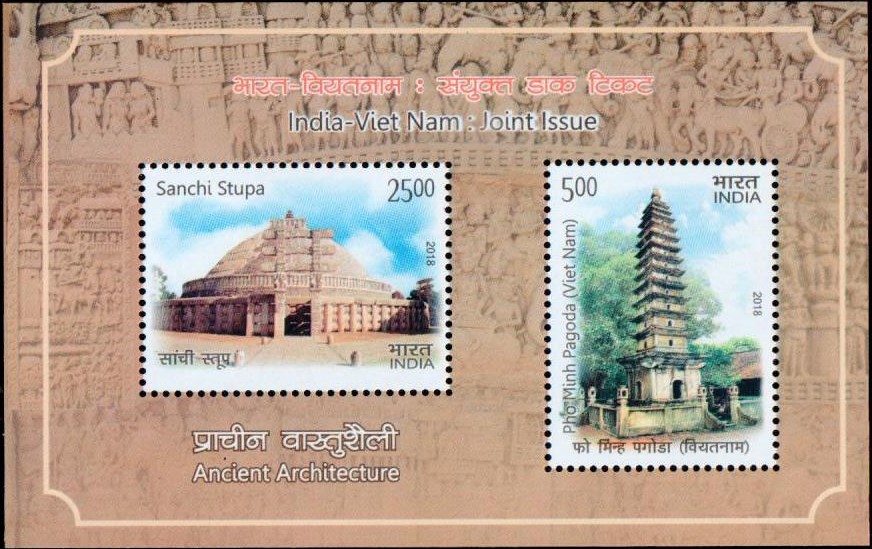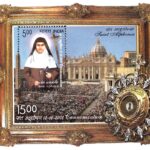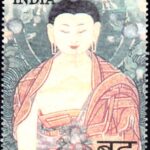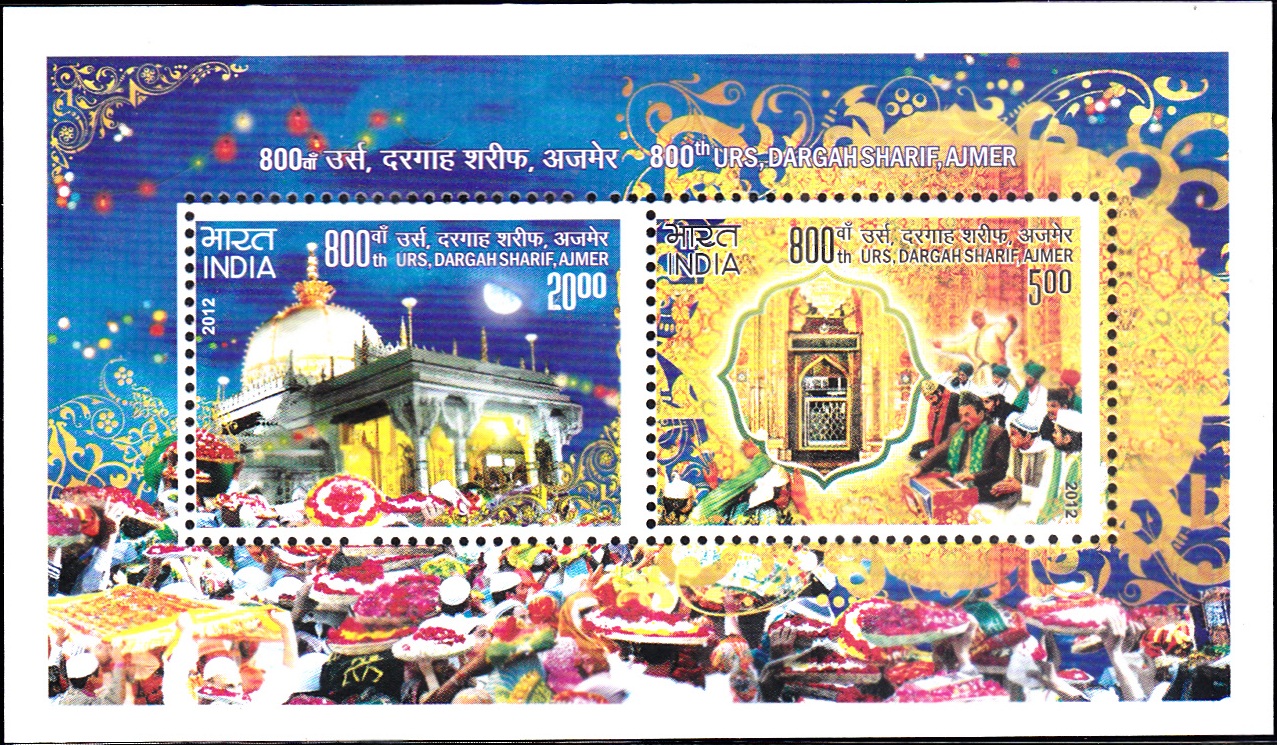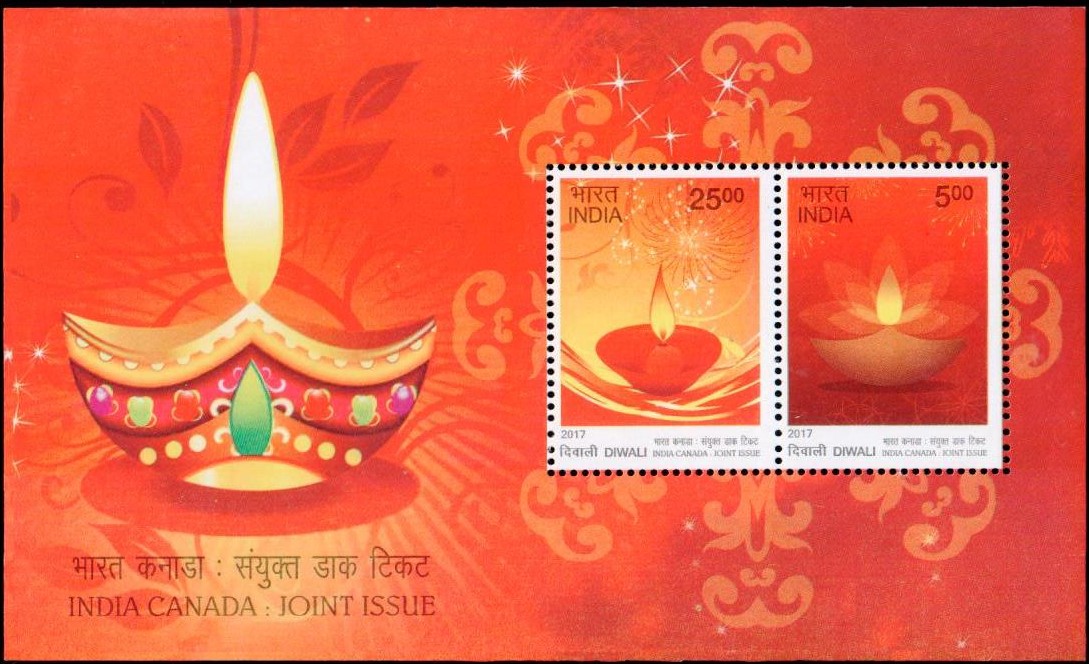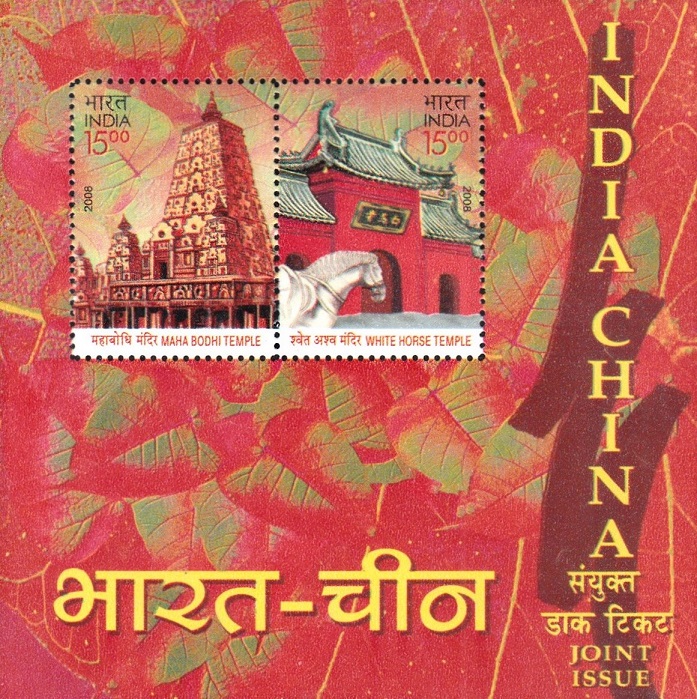
India-China : Joint Issue 2008
A Miniature Sheet consisting of 2 nos of commemorative postage stamps on the India – China : Joint Issue : Buddhist Temples : Maha Bodhi Temple, Bodh Gaya and White Horse Temple, Luoyang City :
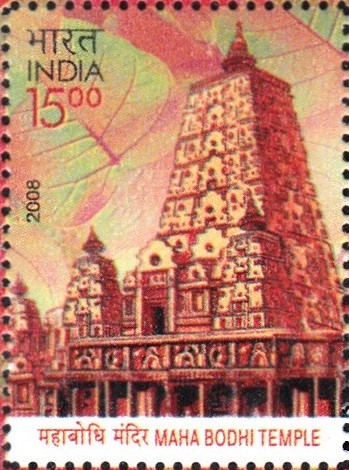
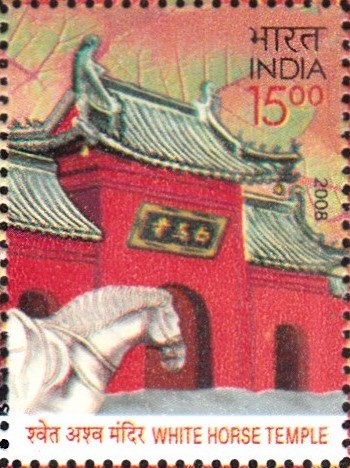
 Issued by India
Issued by India
Issued on Jul 11, 2008
Issued for : The Department of Posts commemorates the bilateral relations between India and China with the release of this set of two stamps depicting the Mahabodhi Temple and the White Horse Temple. Of added philatelic value is the miniature sheet the background of which depicts leaves of the Pipal tree. The Pipal tree (Asvattha, Ficus religiosa) is a significant epitome of Buddhist tradition as it was at the foot of this tree that Gautama Buddha obtained his Bodhi or enlightenment.
Credits :
Stamp & FDC : Bharati Mirchandani
Cancellation : Alka Sharma
Type : Miniature Sheet, Mint Condition
Colour : Multi colour
Denomination : 1500p, 1500p
Stamps Printed : 0.8 Million, 0.8 Million
Miniature Sheet : 0.2 Million
Printing Process : Photogravure
Printer : India Security Press, Nasik
About :
- India and China are two ancient civilizations endowed with rich histories and cultural heritages, which have had centuries long intellectual exchanges. Buddhism played a central role in initiating the movement of people and ideas between the two countries. Many Chinese scholars visited India in the first millennium to study Buddhism and other subjects and also to collect Sanskrit documents with many of them spending a decade or more in India. Many Indian scholars went to China and worked there between the first century and the eleventh century. They were engaged in a variety of pursuits including Indians in China translating Sanskrit documents into Chinese (mostly Buddhist writings), as well as other activities, like the pursuit of mathematics and science. Several Indian mathematicians and astronomers held high positions in China‘s scientific establishment.
- The first firm record of the arrival of Indian monks in China goes back to the first century, when Dharmaraksha and Kasyapa Matanga went at the invitation of Emperor Ming of the Han dynasty. It is said that in A.D. 64, the Seventh year of Yong Ping, Emperor Ming dreamed of a gold deity, flying over the place. The White Horse Temple, established in A.D. 68 is located 12 kms east of the ancient capital city of Luoyang, Henan Province. The next day, he asked his ministers to interpret his dream. Zhong Hu, one of the ministers, explained to him that the deity he dreamed of was probably the Buddha in India. Upon hearing that, the emperor sent a delegation of eighteen ministers headed by Cai Yin, Qin Jing and Wang Zun to seek Buddhism in India. The team crossed mountains and hills before finally arriving in what is now Afghanistan, where they studied Buddhist codes, got a portrait of Sakyamuni, and the Forty-two Sutras. While returning, they invited two eminent Indian monks, Kasyapa Matanga and Dharmaraksha (known in China by the names She Moteng and Zhu Falan) to come with them. They brought with them a white horse carrying Buddhist sutras and Buddhist figures on its back. This was the first time that Buddhism appeared in China. The two monks were highly respected by Emperor Ming. In A.D. 68, a temple was ordered to be built to the west of the Luoyang City, which was named the White Horse Temple in memory of the white horse which carried back the Buddhist sutras.
- It was in this temple that the first version of the Chinese Forty-two Sutras was produced, which was a work of translation done by the first Indian monks there. The monastery became a centre of Buddhist studies. Ever since, Buddhism exerted more and more influence on the life of the Chinese and spread as far as Japan, Korea and Vietnam. That is why the White Horse Temple is referred to as “the Founder’s Home” and “the cradle of Buddhism“. The two Indian monks She Moteng and Zhu Falan worked in the monastery till death and were buried to the east and west of the temple. The temple boasts of great antique architecture including the Hall of Heavenly Kings, Hall of the Great Buddha, Hall of Mahavira, Hall of Guidance and the Cool and Clear Terrace that are different parts of the temple housing different incarnations of Buddha amid magnificent decoration and architectural splendour.
- The Mahabodhi Temple is built in a place where Siddharth or Gautama obtained enlightenment or Bodhi, and became the Buddha…the Enlightened One. The temple is in Bodhgaya, District Gaya, in the state of Bihar in Eastern India. Bodhgaya has grown on the banks of the Lilajan (ancient Nairanjana) river near the ancient village of Uruvela. The Mahabodhi Temple has soaring pyramidal spire, 54 meters (177 feet) high, is carved in tiers and capped by an umbrella like finial. The gateway to the temple is made of granite and is covered with inscriptions from Buddha‘s teaching. The temple is enclosed on three sides by a 1st century B.C. stone railing carved with lotus medallions and scenes from Buddha‘s life.
- Legend has it that the Buddha sat under the Mahabodhi Tree facing the rising sun. He stayed in Bodhgaya for seven weeks after his enlightenment. Each week was spent in a different part of the temple complex. The first week was spent under the Bodhi Tree. One of the earliest constructions at the foot of the Bodhi tree was a polished sandstone throne, Vajrasana which marks Buddha‘s seat of meditation. It is ascribed to Asoka, who as one of his edicts proclaims, undertook pilgrimage to Sambodhi. Other remnants include a covered promenade i.e. the chankama of Buddha. The chankama marks the sacred spot where Buddha spent the third week after his Enlightenment, meditatively walking up and down. It is now a brick platform with representation of lotuses, which are believed to have blossomed forth under the footsteps of Buddha.
- Inside the temple sits a large glided statue of Shakyamuni Buddha in earth touching mudra and is facing east exactly at the place where the Buddha, sitting in meditation with his back to the Bodhi Tree, was enlightened. The Temple (Vajrasana-brihadha-gandha-kuti) underwent several stages of repair and renovation but utmost care has been taken to maintain the original pattern.


